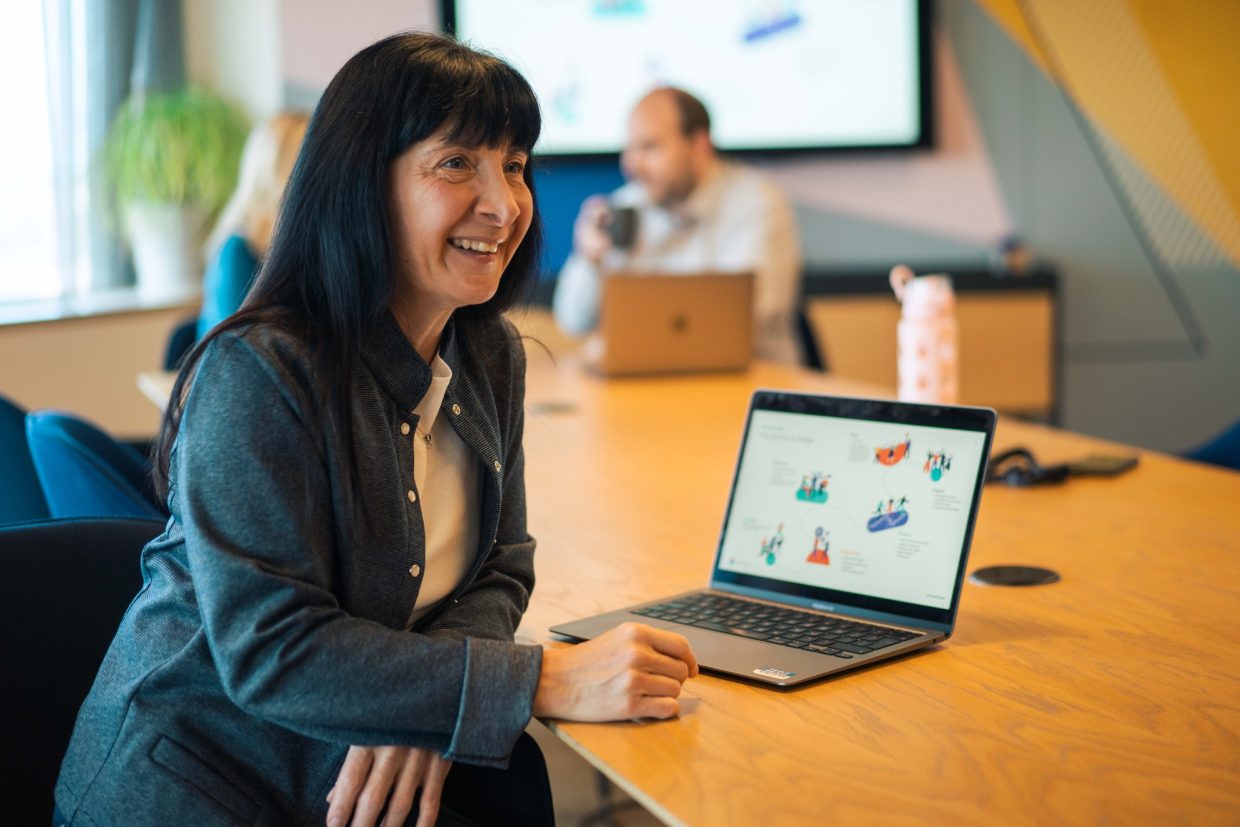A powerful tool
A truly productive and resilient team requires leaders to invest in soft skills training for their teams. Modern methods of training, such as hands-on coaching and collaboration gives workers a better opportunity to adopt key attributes like critical thinking and problem-solving.
One effective method is the blended team approach. This coaching style enables upskilling through demonstration, supported practice and enabling the individual to exercise skills independently. It’s also one of the most powerful tools in our arsenal.
1. Hands-on coaching creates positive people change
It’s time upskilling became more than training through presentations as the UK economy loses around £22.2 billion annually due to a lack of soft skills in the workforce. Through a hands-on, blended team model, workers are encouraged to develop soft skills, particularly in teamwork and leadership. They should do this at their own pace, and in a safe and engaging environment.
Collaborative working and peer-to-peer revision is a great means of putting this approach into practice. Teams will naturally develop problem-solving, empathy and open-mindedness through their exposure to different or more experienced ways of working and thinking. This could be accomplished through brainstorming the team’s capacity to deliver multiple projects, allowing more junior staff to observe the leadership skills required to assess and distribute responsibilities, and potentially give them chance to try for themselves.
2. Focus on communication for better business change
During change projects and programmes, effective communication ensures people know how to use a new tool. Similarly, it enables managers to spot pinch points early on and understand the type of training they might need to support adoption.
Communicating with external stakeholders in senior roles will need a different approach than speaking to colleagues, for instance. Equally, encouraging people from all generations to embrace different communication channels, from WhatsApp to traditional emailing, will help maintain productivity.
Introducing newer channels and supporting those who aren’t familiar with them will maximise collaboration and ensure the business stays competitive.
3. Hands-on approach to project management
As previously mentioned, a blended team is the perfect opportunity for employees to take ownership of a change project whilst honing their soft skills.
By providing a hands-on learning experience to project management, leaders can empower employees to make independent decisions and encourage critical thinking. Alongside this they allow for the innovative options of others to shape how the project is delivered.
For a blended approach to work, employees should have exposure to everything. This ranges from board meetings to tendering, with the appropriate level of involvement in each.
4. Inspire employee advocacy
Long-lasting change stems from a transformation that has had full employee buy in. This is irrespective of seniority and role. By adopting a blended team approach to business change, employees are more likely to follow the lead of senior peers in reaction to change.
For senior stakeholders, leading a business towards a successful transformation is all in their ability to communicate, inspire and motivate the employees around them.
Soft skills are a necessity within business change. In today’s competitive business landscape having a wise workforce is the key to sustainable growth. Through collaboration and exposure, workers will build on basic and more advanced skills that will benefit the business and themselves.

